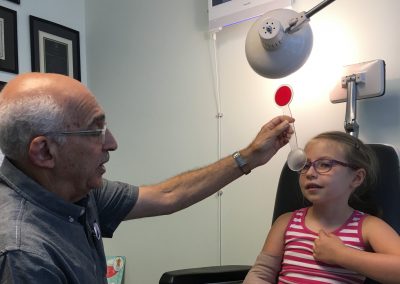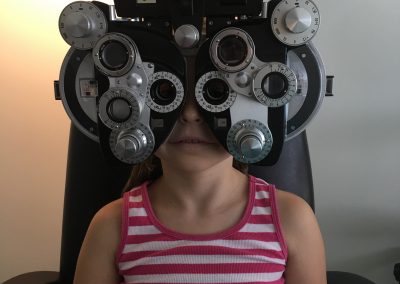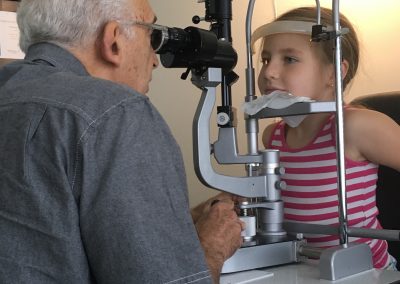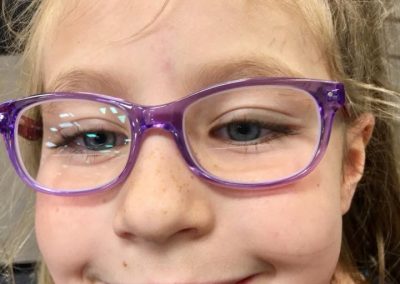
Your child may need more than just a pair of glasses to see clearly.
The visual system seems so simple yet behind those lenses lies a very complex network of cause and effect systems, all communicating with each other all about the information presented before those eyeballs. Should one piece of this network miss some information, the rest of the systems also miss this information. When information that doesn’t make sense arrives at the brain, it becomes confused and even a bit disoriented. When this visual information doesn’t match up with the information coming in through other systems in the body, problems will arise in most areas of life. Reading, writing, walking, sports, art, self-care tasks, every area will be a struggle until the visual system can be more organized.
Some signs that a child is having trouble with their vision can look like the following:
Your child has new glasses but is still having trouble.
Your child is reading by moving their head instead of their eyes.
Your child closes one eye or turns their head to the side when looking at something.
Your child avoids climbing activities or demonstrates fear when leaving contact with the ground.
Your child seems unusually clumsy.
Your child struggles when looking from the board to the desk and back.
Your child complains of headaches.
Kids are often evaluated for basic visual acuity but visual processing is often overlooked. Vision requires the ability of both eyes to work together and allow the information to travel to the brain for interpretation of what is seen. When both eyes are not able to work as a team, visual processing difficulties are the result. So what can you do about it? You can see either a vision therapist or a behavioral optometrist to train, strengthen, and adapt the eyes and vision. Dr Kadet of The Hope Clinic has provided a checklist of signs parents can look for to help determine if a behavioral optometrist can help.
0=Never, 1=Seldom, 2=Occasionally, 3=Frequently, 4=Always
| Headaches from near work | 0 |
1 |
2 |
3 |
4 |
| Words run together when reading | 0 |
1 |
2 |
3 |
4 |
| Burning, itchy, watery eyes | 0 |
1 |
2 |
3 |
4 |
| Skips/repeats lines when reading | 0 |
1 |
2 |
3 |
4 |
| Head tilt/closes one eye when reading | 0 |
1 |
2 |
3 |
4 |
| Difficulty copying from chalkboard/overhead | 0 |
1 |
2 |
3 |
4 |
| Avoids near work/reading | 0 |
1 |
2 |
3 |
4 |
| Omits small words when reading | 0 |
1 |
2 |
3 |
4 |
| Writes uphill or downhill | 0 |
1 |
2 |
3 |
4 |
| Misaligns digits/columns of numbers | 0 |
1 |
2 |
3 |
4 |
| Reading comprehension down | 0 |
1 |
2 |
3 |
4 |
| Holds reading material too close | 0 |
1 |
2 |
3 |
4 |
| Trouble keeping attention on reading | 0 |
1 |
2 |
3 |
4 |
| Always says “I can’t” before trying | 0 |
1 |
2 |
3 |
4 |
| Clumsy, knocks things over | 0 |
1 |
2 |
3 |
4 |
| Does not use his/her time well | 0 |
1 |
2 |
3 |
4 |
| Loses belongings/things | 0 |
1 |
2 |
3 |
4 |
| Forgetful/poor memory | 0 |
1 |
2 |
3 |
4 |
|
Total: 0 |
|||||
A behavioral optometrist tests and treats the processing skills of each eye. An optometrist tests and treats acuity only.
The Australasian College of Behavioural Optometrists has provided a great checklist for teachers (and parents) to screen for visual processing difficulties: ACBO_Flyer_Teachers_Classroom_Vision_Checklist_FINAL
Concerns about visual processing abilities can be brought to the behavioral optometrist for help maximizing skills via specific lenses, vision therapy, and/or environmental adaptations.




